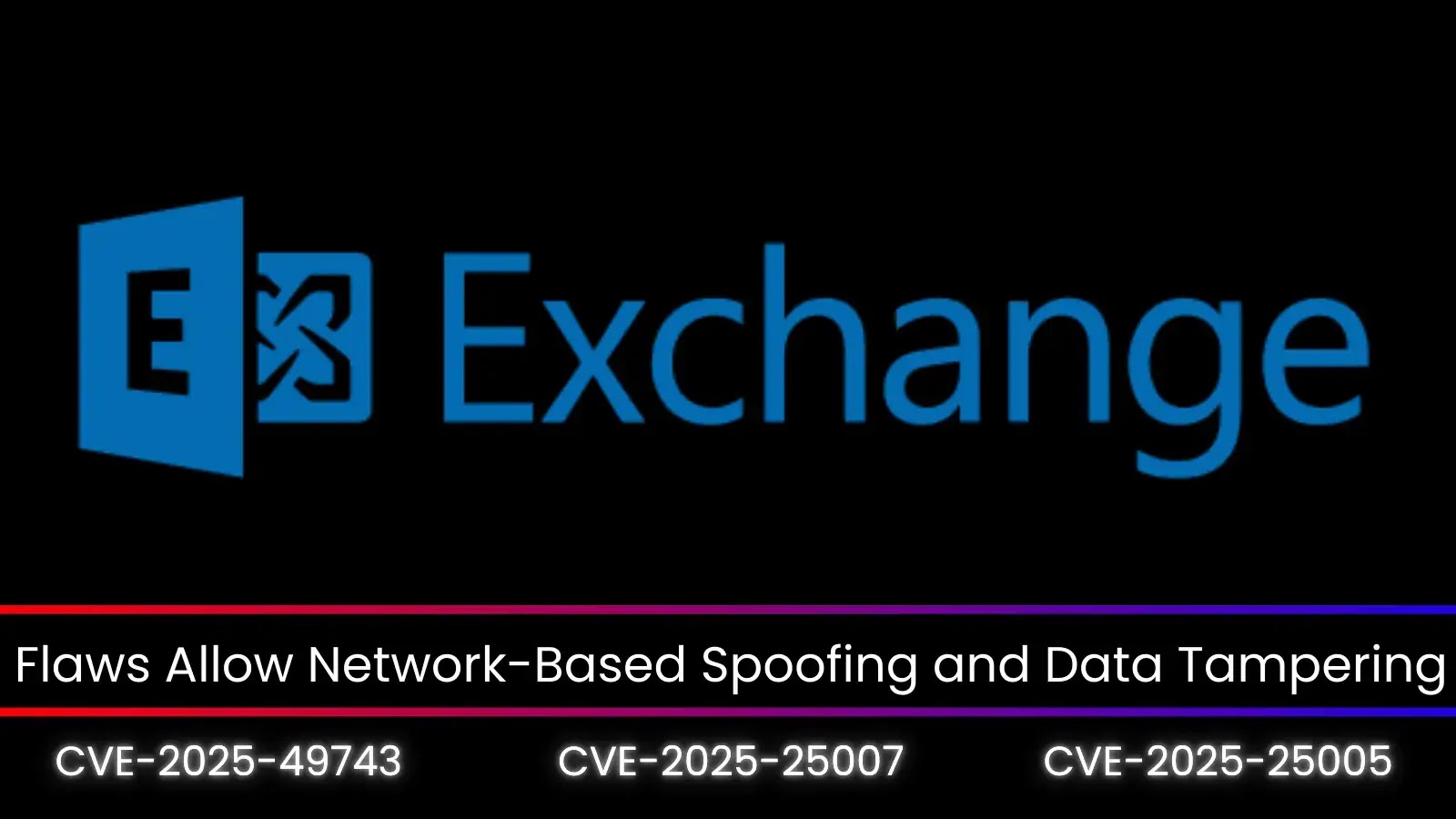Microsoft has disclosed critical security vulnerabilities in Exchange Server that could enable attackers to conduct network-based spoofing attacks and tamper with sensitive data, according to security bulletins released on August 12, 2025.
The vulnerabilities, identified as CVE-2025-25007 and CVE-2025-25005, pose significant risks to organizations running Microsoft’s email and collaboration platform.
Critical Exchange Server Vulnerabilities Identified
The newly discovered flaws affect Microsoft Exchange Server deployments worldwide, with both vulnerabilities carrying an “Important” severity rating.
CVE-2025-25007 addresses a spoofing vulnerability that stems from improper validation of syntactic correctness of input, while CVE-2025-25005 involves a tampering vulnerability caused by improper input validation mechanisms.
| CVE ID | Vulnerability Type | CVSS Score |
| CVE-2025-25007 | Spoofing | 5.3/4.6 |
| CVE-2025-25005 | Tampering | 6.5/5.7 |
| CVE-2025-49743 | Elevation of Privilege | 6.7/5.8 |
CVE-2025-25007, the spoofing vulnerability, presents a particularly concerning attack vector as it can be exploited remotely over the network without requiring authentication or user interaction.
With a CVSS score of 5.3, this flaw could allow malicious actors to impersonate legitimate users or systems, potentially leading to sophisticated social engineering attacks or unauthorized access attempts.
The tampering vulnerabilityCVE-2025-25005carries a higher CVSS score of 6.5 and requires low-level privileges to exploit.
However, it grants attackers high-level access to confidential information, making it a significant threat to data integrity within Exchange environments.
This vulnerability could enable attackers to modify email contents, alter configuration settings, or manipulate other critical data stored within the Exchange infrastructure.
Additionally, Microsoft addressed a related Windows Graphics Component elevation of privilege vulnerability (CVE-2025-49743) that could be exploited in conjunction with Exchange Server attacks to escalate privileges on affected systems.
Organizations utilizing Microsoft Exchange Server should prioritize applying security updates as soon as they become available.
The network-based nature of these vulnerabilities means that internet-facing Exchange servers are particularly vulnerable to exploitation attempts.
Security experts recommend implementing additional monitoring for unusual email activities, reviewing authentication logs for suspicious patterns, and considering temporary restrictions on external email processing until patches can be deployed.
The combination of spoofing and tampering capabilities creates a dangerous attack scenario that could compromise email integrity and organizational communications.
Microsoft’s coordinated disclosure of these vulnerabilities underscores the ongoing security challenges facing enterprise email systems and the critical importance of maintaining current security patches across Exchange Server deployments.
AWS Security Services:10-Point Executive Checklist - Download for Free

